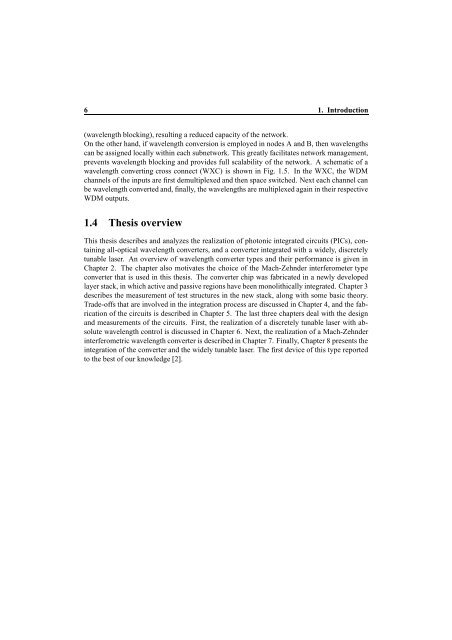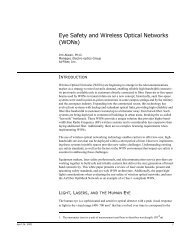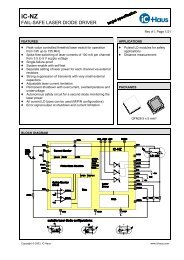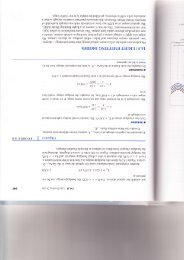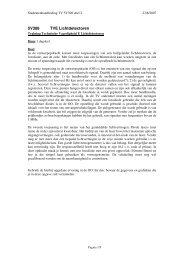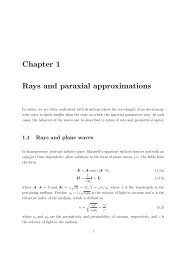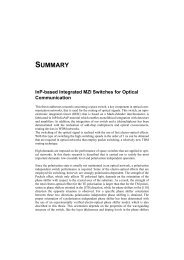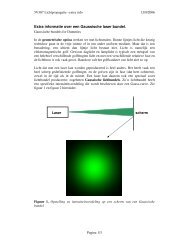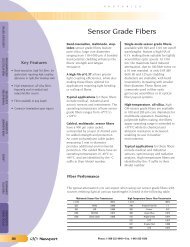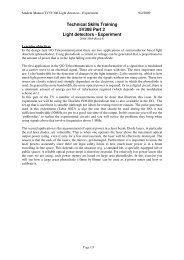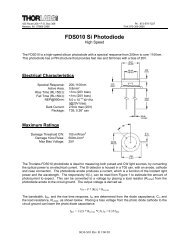A Wavelength Converter Integrated with a Discretely Tunable Laser ...
A Wavelength Converter Integrated with a Discretely Tunable Laser ...
A Wavelength Converter Integrated with a Discretely Tunable Laser ...
You also want an ePaper? Increase the reach of your titles
YUMPU automatically turns print PDFs into web optimized ePapers that Google loves.
6 1. Introduction<br />
(wavelength blocking), resulting a reduced capacity of the network.<br />
On the other hand, if wavelength conversion is employed in nodes A and B, then wavelengths<br />
can be assigned locally <strong>with</strong>in each subnetwork. This greatly facilitates network management,<br />
prevents wavelength blocking and provides full scalability of the network. A schematic of a<br />
wavelength converting cross connect (WXC) is shown in Fig. 1.5. In the WXC, the WDM<br />
channels of the inputs are first demultiplexed and then space switched. Next each channel can<br />
be wavelength converted and, finally, the wavelengths are multiplexed again in their respective<br />
WDM outputs.<br />
1.4 Thesis overview<br />
This thesis describes and analyzes the realization of photonic integrated circuits (PICs), containing<br />
all-optical wavelength converters, and a converter integrated <strong>with</strong> a widely, discretely<br />
tunable laser. An overview of wavelength converter types and their performance is given in<br />
Chapter 2. The chapter also motivates the choice of the Mach-Zehnder interferometer type<br />
converter that is used in this thesis. The converter chip was fabricated in a newly developed<br />
layer stack, in which active and passive regions have been monolithically integrated. Chapter 3<br />
describes the measurement of test structures in the new stack, along <strong>with</strong> some basic theory.<br />
Trade-offs that are involved in the integration process are discussed in Chapter 4, and the fabrication<br />
of the circuits is described in Chapter 5. The last three chapters deal <strong>with</strong> the design<br />
and measurements of the circuits. First, the realization of a discretely tunable laser <strong>with</strong> absolute<br />
wavelength control is discussed in Chapter 6. Next, the realization of a Mach-Zehnder<br />
interferometric wavelength converter is described in Chapter 7. Finally, Chapter 8 presents the<br />
integration of the converter and the widely tunable laser. The first device of this type reported<br />
to the best of our knowledge [2].


